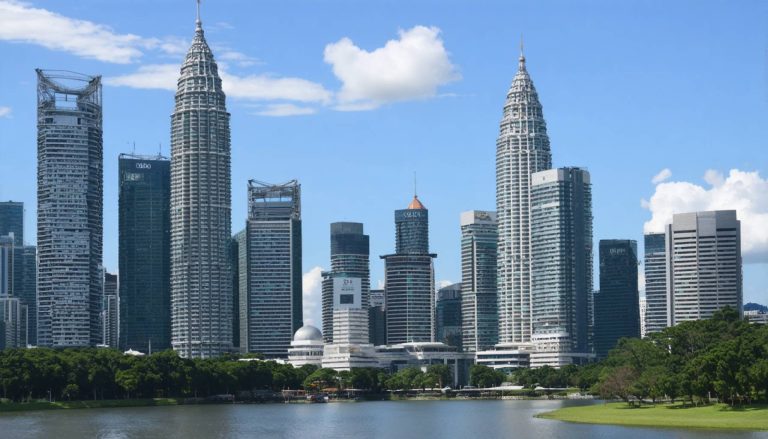
realistic photo of business consulting --ar 16:9 Job ID: 4261779f-04de-482e-bced-c3809a8fca8b
Colombia, a vibrant country known for its rich cultural heritage and dynamic economy, has a comprehensive legal framework to protect intellectual property (IP). The laws and regulations governing IP in Colombia are designed to safeguard the rights of creators, innovators, and businesses, fostering an environment that promotes creativity, innovation, and economic growth.
Overview of Intellectual Property Law in Colombia
Colombia’s intellectual property laws are primarily influenced by international agreements and conventions, such as the Paris Convention for the Protection of Industrial Property, the Berne Convention for the Protection of Literary and Artistic Works, and the Agreement on Trade-Related Aspects of Intellectual Property Rights (TRIPS). These agreements underscore Colombia’s commitment to maintaining robust IP protections aligned with global standards.
The key pieces of legislation governing IP in Colombia include Decision 486 of the Andean Community, which regulates industrial property, and Law 23 of 1982, which addresses copyright and related rights. These laws cover various domains of intellectual property, including trademarks, patents, industrial designs, copyrights, and geographical indications.
Trademarks
A trademark is a sign capable of distinguishing the goods or services of one enterprise from those of other enterprises. In Colombia, trademarks can include words, symbols, colors, shapes, slogans, and even sounds. Registration of trademarks is managed by the Superintendence of Industry and Commerce (SIC). Once registered, a trademark is protected for an initial period of ten years, which can be renewed indefinitely.
Patents
Patents are exclusive rights granted for an invention, providing the patent holder with the right to exclude others from making, using, selling, or importing the patented invention. In Colombia, patent protection is available for both products and processes that are new, involve an inventive step, and are susceptible to industrial application. Patents are granted for a term of 20 years from the date of filing, and like trademarks, the SIC oversees patent registration.
Industrial Designs
Industrial designs refer to the ornamental or aesthetic aspect of an article. Protection of industrial designs in Colombia lasts for ten years from the filing date. This protection enables creators to prevent others from making, selling, or importing products bearing or embodying a design which is a copy, or substantially a copy, of the registered design.
Copyrights
Copyright law in Colombia protects the rights of authors over their literary, scientific, and artistic works. This includes books, music, software, architectural designs, and more. Copyright protection arises automatically upon the creation of a work and lasts for the lifetime of the author plus 80 years after their death. The National Directorate of Copyrights (DNDA) is responsible for the oversight and administration of copyrights in Colombia.
Geographical Indications
Geographical indications (GIs) are used to identify a product as originating from a specific place, where a given quality, reputation, or other characteristic of the product is essentially attributable to its geographic origin. Colombia offers protection for GIs through registration, ensuring that only products genuinely originating from the specified region can use the geographical indication.
Challenges and Improvements
Despite the robust framework, Colombia faces challenges in fully enforcing IP laws due to issues like piracy and counterfeiting. The country has made significant strides in addressing these issues by enhancing enforcement mechanisms, increasing public awareness, and strengthening cooperation with international bodies.
Business Environment in Colombia
Colombia’s strategic location, diversified economy, and comprehensive trade agreements make it an attractive destination for business and investment. The country boasts strong sectors such as agriculture, mining, manufacturing, and services, underpinned by a growing middle class and improving infrastructure.
For businesses operating in Colombia, understanding and navigating the intellectual property landscape is crucial. Protecting IP assets not only safeguards investments but also enhances competitiveness in the market. With Colombia’s proactive stance on IP protection and ongoing improvements in enforcement, the country continues to build a more secure and investor-friendly environment.
Conclusion
Colombia’s intellectual property laws are well-structured and aligned with international standards, providing crucial support for innovation and creativity. As the country continues to strengthen its IP enforcement and awareness, businesses and creators can look forward to a more robust and supportive environment to protect their intellectual assets. In this evolving landscape, staying informed and proactive about intellectual property rights remains essential for success in Colombia’s dynamic economy.
Suggested Related Links about Understanding Intellectual Property Law in Colombia:
SIC (Superintendencia de Industria y Comercio)
Ministerio de Comercio, Industria y Turismo



